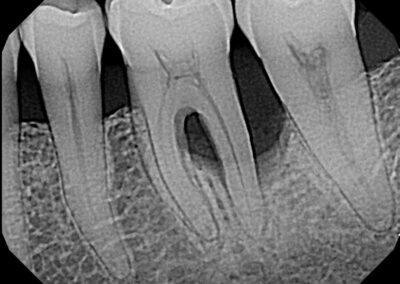Laser Treatment for Periodontal Disease
LANAP Animation
A laser is a high tech device that generates a tiny beam of very concentrated light. This beam of light brings energy into your inflamed pocket through a tiny fiber to help remove areas of infection and diseased tissue with great precision and accuracy. The laser beam sterilizes the affected area and seals off blood vessels, which minimizes the chance of infection and bleeding. Patients are also much more comfortable during and after treatment with laser therapy. It eliminates the need for cutting and suturing.
Are Lasers New to Dentistry
Lasers were developed in the early 1960s but recently this type of non-water based laser, the NdYAG, received FDA clearance to be used to treat periodontal disease making it possible to use the laser effectively in a periodontal practice for treatment of periodontal disease.
Are Lasers Dangerous
In the hands of a skilled and trained periodontist like Dr. Robles, lasers are very safe. Dr. Robles and her staff have had over a years worth of training with the Millennium Laser with excellent results. In fact the laser is very low powered and only targets the inflamed diseased tissue without removing any healthy tissue. The laser light is absorbed by the gram negative bacteria that cause periodontal disease and initiates the inflammation cascade. The laser eliminates these bacteria and healthy bacteria repopulate the area. Scaling and root planing is completed concurrently by special instruments to remove debris.
Benefits of Laser Dentistry
There are many benefits of laser dentistry to include –
2. Reduced Risk of Infection
3. Decreased Sensitivity
4. Less Time in Dental Chair
5. Less Bleeding/ Less Swelling


